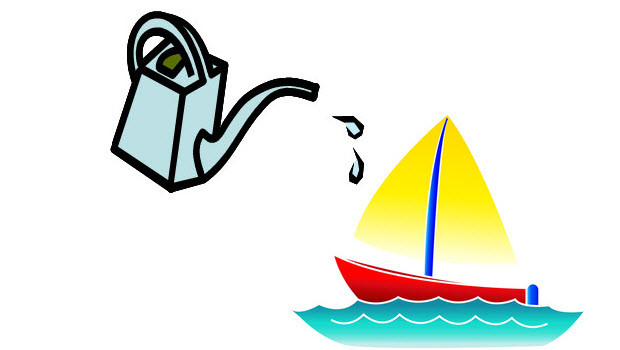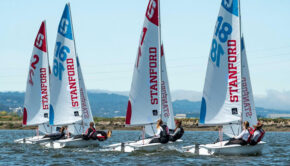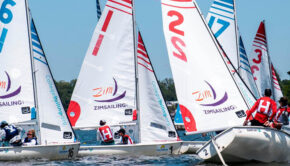Observations From Silicon Valley
Published on February 6th, 2014
Stanford sailing head coach John Vandemoer shares some of the issues that are affecting the progress of the sport….
We have to connect to the sailors that are already there, the ones that are already created, to the younger sailors. Because as they go on from college, they are not continuing to sail.
Let’s talk about the make-up of the people I coach and work with at Stanford sailing. Women dominate the sector. There are more and more women involved in competitive sailing, and in our PE classes, there are 60% women. This percentage is not unique to Stanford.
There are over 200 universities in the United States that have college sailing programs. That’s well over 2000 sailors a year that are involved on a racing level, and there are many more if you include the recreational programs. And again, we have 60% of them as women.
But there is a problem in the marine industry with women.
My wife is Molly O’Brien Vandemoer, who competed at the 2012 Olympics in sailing. She is exceedingly active in the sport, competing at the highest level, and traveling extensively. In the midst of her training, competitions, and work with a local youth sailing foundation, she is a frequent customer in the marine industry. It’s been her observation that because she is a woman, she is assumed to have little knowledge, and is thus treated that way. She has recognized a perception problem, largely a result of older men on the service side.
So if we want to connect with the younger generation, and in particular this large female component, the marine industry needs to have a similar demographic on the service side.
Additionally, we need the female heroes. This latest America’s Cup tried hard to promote younger, athletic men, but fell tragically short in providing female role models.
With regard to the recreational side of sailing at Stanford, we have tons of extremely intelligent students in the physical education program, who are likely to have highly lucrative professional careers. So I have this exceptional demographic taking PE sailing, and they love it. They get fully engaged in the class, but then aren’t sure what to do next. And I am not sure what to tell them.
But these are technically driven people, and solutions need to exist on that level.
Colleges and universities have invested significant capital into the sport of sailing. Particularly Ivy League schools, such as MIT, which probably has the biggest recreational sailing department in the country. They work with 1000s of sailors a year, on the Charles River, which is arguably the worst place to sail in this country. But they do an incredible amount of volume, and their students love it.
So a connection needs to be made as these students go through the school programs, to enable them to continue their sailing. They are likely going to have some debt to pay down, and some time needed to build purchasing capital, but keeping them engaged in the sport at low or no cost is a connection that needs to be made.
So there is a significant flow of people passing through universities, particularly elite universities, which already have the sailing skills to enter the sport, and will have the buying power to support themselves in the sport. We just need to connect with them.









 We’ll keep your information safe.
We’ll keep your information safe.